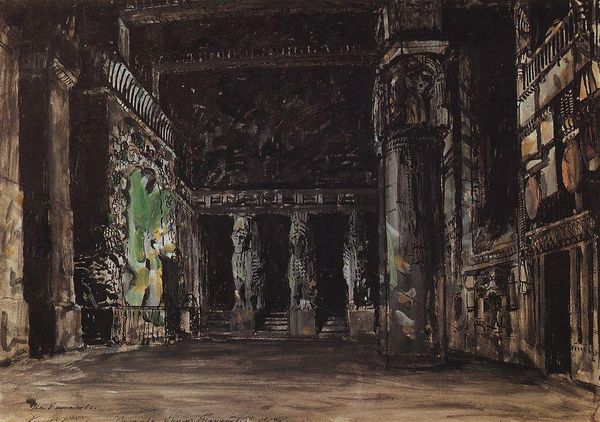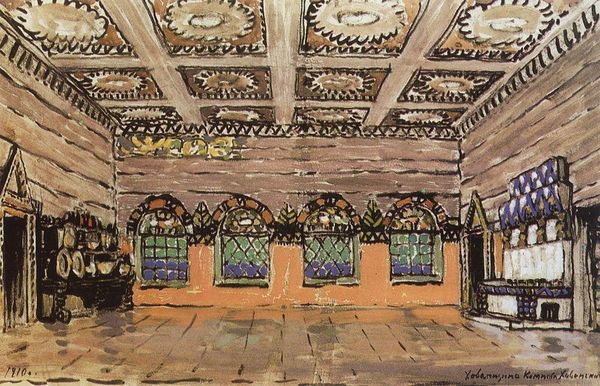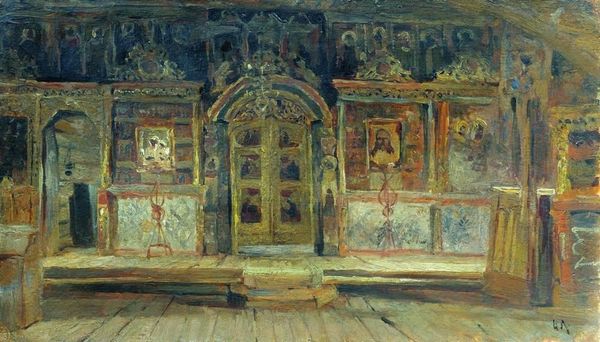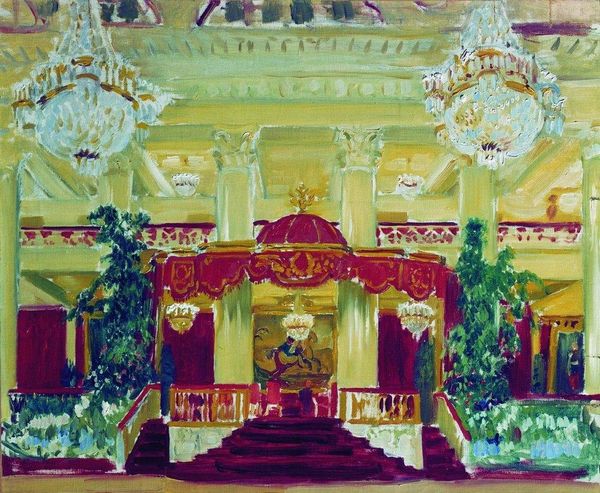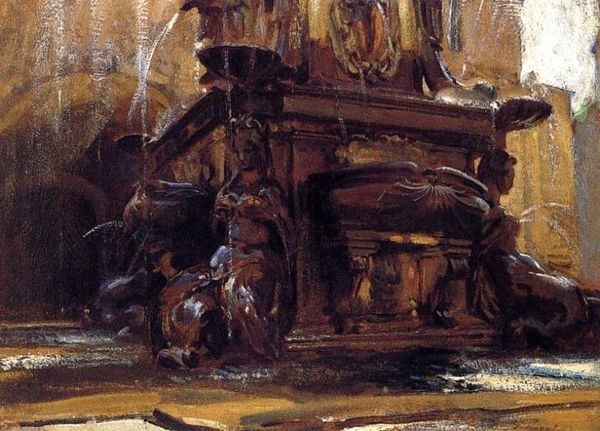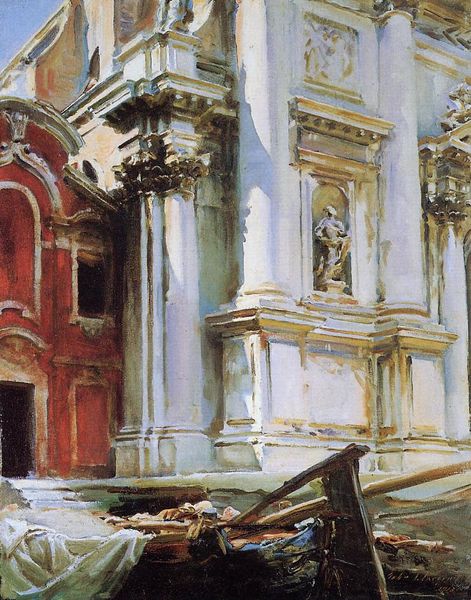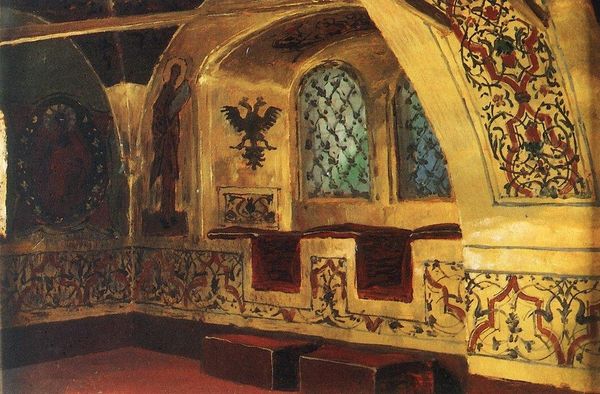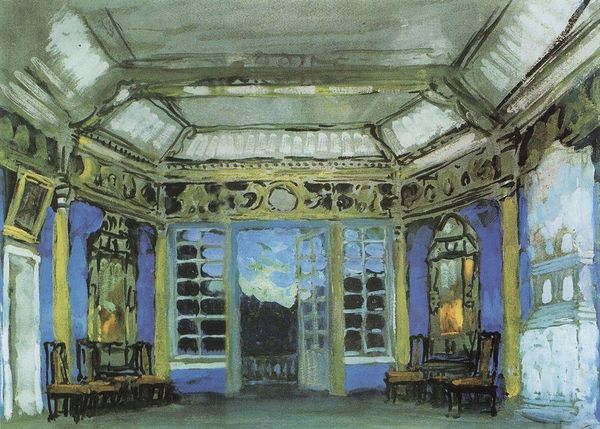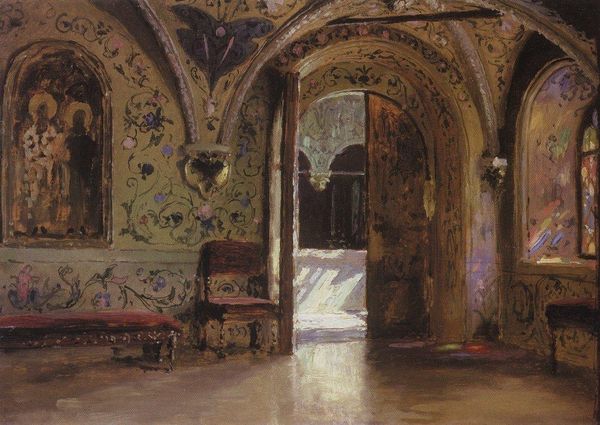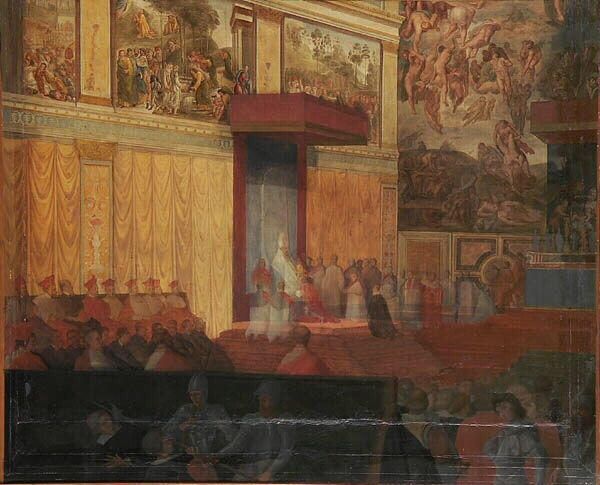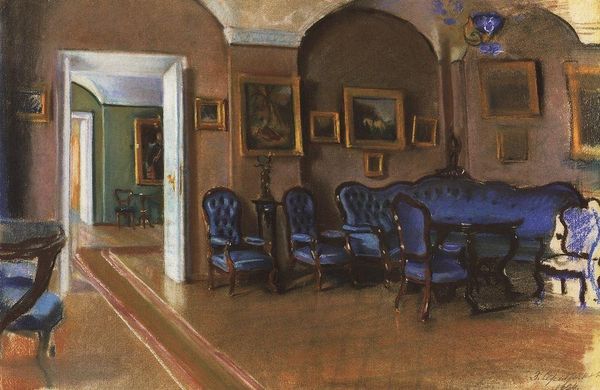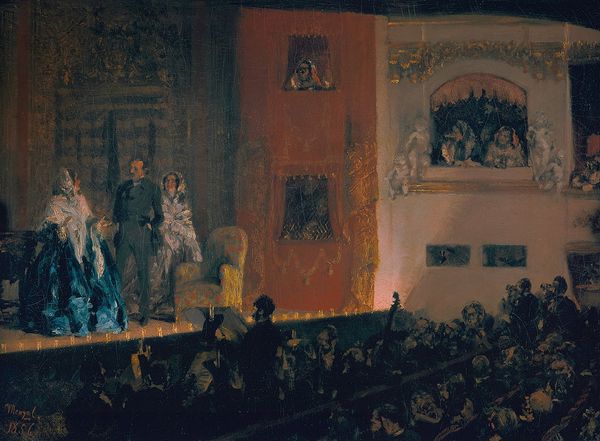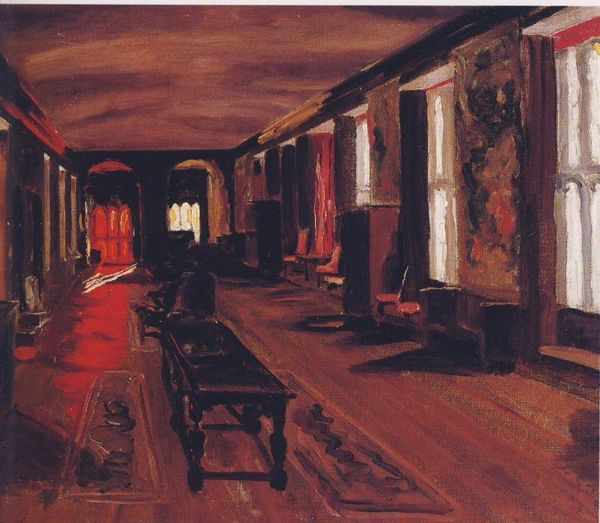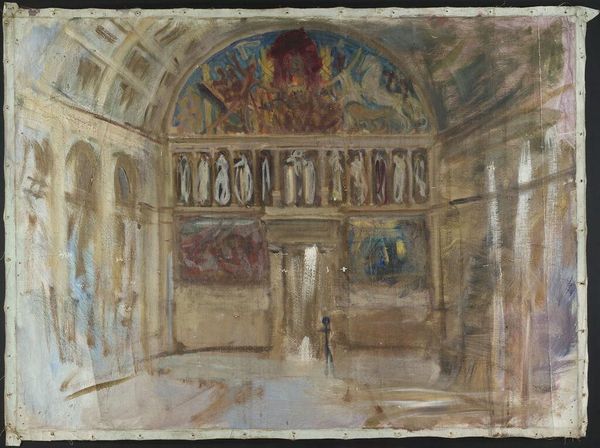
Dimensions: 48.26 x 69.21 cm
Copyright: Public domain
Curator: This is John Singer Sargent’s "Interior of the Doge's Palace," painted in 1898, an oil-on-canvas portrayal that delves into the socio-historical space of Venetian power. Editor: Wow, it feels like stepping back in time, doesn't it? The gold, the dark walls... a bit overwhelming, really. A grand space with whispers of secrets held within its walls. Almost oppressive, in a way. Curator: Indeed. Consider the materials at play: oil paint, canvas—common for the time—but Sargent's manipulation transforms them. Look how the brushstrokes mimic the gilded excess of the Venetian Republic's later years. It critiques the means of power through the very act of its representation. Editor: I see what you mean. It’s almost…claustrophobic, despite the grandeur. The lighting, those heavy drapes and ornate details seem to suffocate the scene. As an artist myself, it's the texture that captivates—a world sculpted by shadows and opulence. Curator: That darkness speaks volumes. The Doge's Palace wasn’t just about shimmering surfaces; it was a locus of political maneuvering and historical significance, all dependent upon resources and labour—mined pigments, woven fabrics. Sargent reduces this vastness to a concentrated study on production. Editor: Exactly! Like, imagine the artisans involved in creating all that gilding! Makes you wonder about their stories, their lives. All those hands contributing to this image of power...but it does invite one to imagine and connect with these bygone individuals that contributed to such space and artwork. Curator: The architecture isn't simply a backdrop. It's an active element in the artwork and larger socio-economic network, reflecting historical tensions and the distribution of wealth, even impacting the supply and demand for globes as status symbols. Editor: So much gold. Such a beautiful rendering of a stuffy old room! All jokes aside, this prompts the realization that everything has a rich story of origin, and an equally interesting legacy to bear. I'll never look at these spaces quite the same. Curator: Nor will I. Analyzing the work's materiality provides a unique lens into history.
Comments
No comments
Be the first to comment and join the conversation on the ultimate creative platform.
